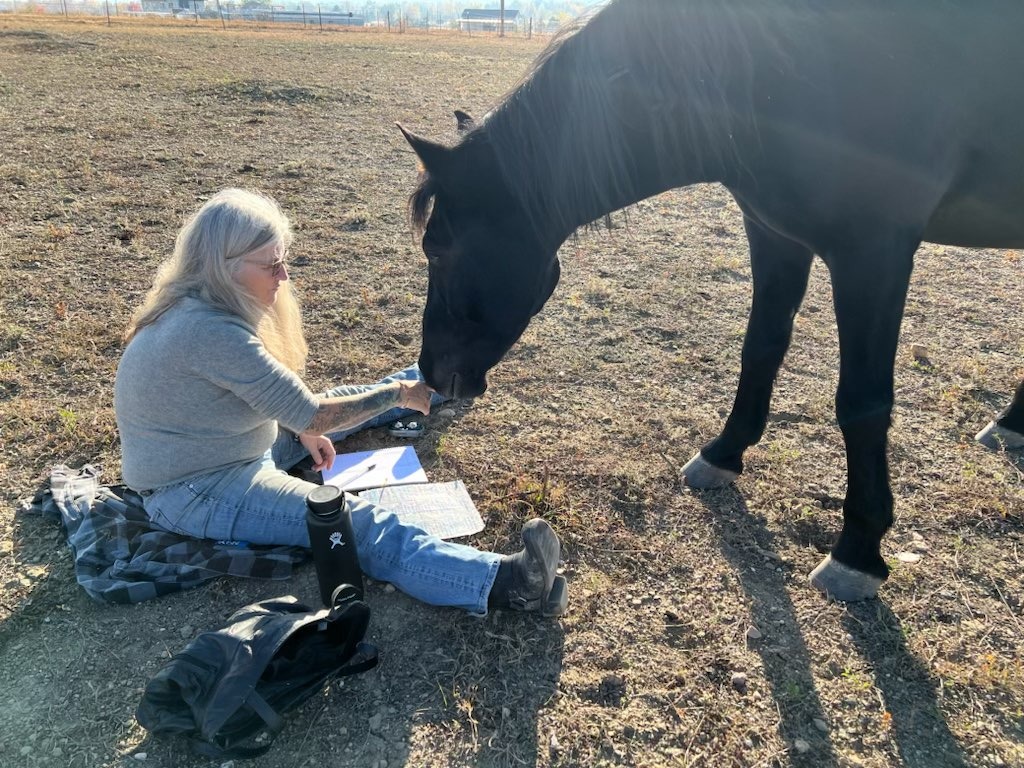
For the last year and a half, I have been volunteering my Energy Healing Practice to Great Escape Mustang Rescue, because of the cruel and inhumane treatment by the Bureau of Land Management (BLM), spending the public’s tax dollars on cruelty and genocide. I am a certified Emotion Code, Body Code, Belief Code Practitioner and I have found that this modality works wonders on traumatized animals. I work with most of the horses, remotely.
The Bureau of Land Management (BLM) Wild Mustang Roundup refers to the BLM’s controversial practice of gathering and removing wild horses (mustangs) and burros from public lands in the American West. The roundups are part of the BLM’s efforts to manage wild horse populations, which are protected by the Wild Free-Roaming Horses and Burros Act of 1971. This act designated wild mustangs and burros as “living symbols of the historic and pioneer spirit of the West” and gave them legal protection on public lands. However, the law also called for managing populations to prevent overgrazing and land degradation, with the BLM tasked with balancing the health of the land, wildlife, livestock, and wild horses.
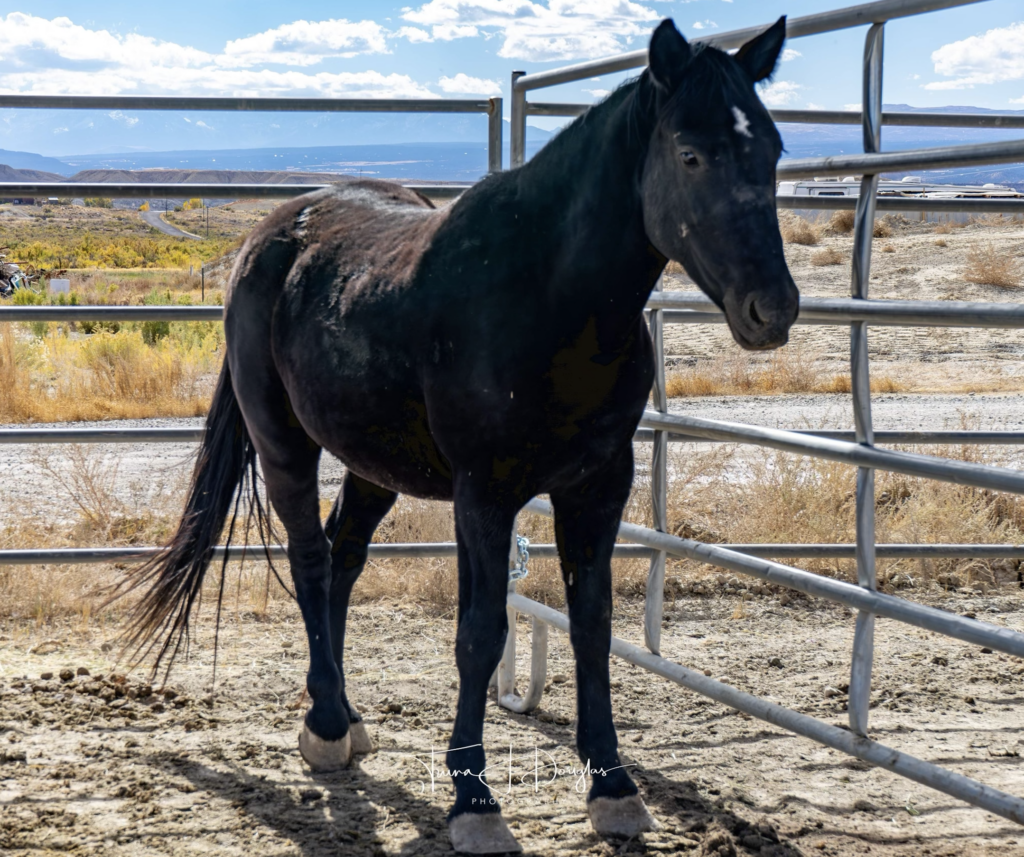
Was that just the loop-hole the government needed to imprison wild horses and burros for the remainder of their lives? Are these laws seemingly sounding good to the population but really they are what gives the government the “right” to torture wild animals?
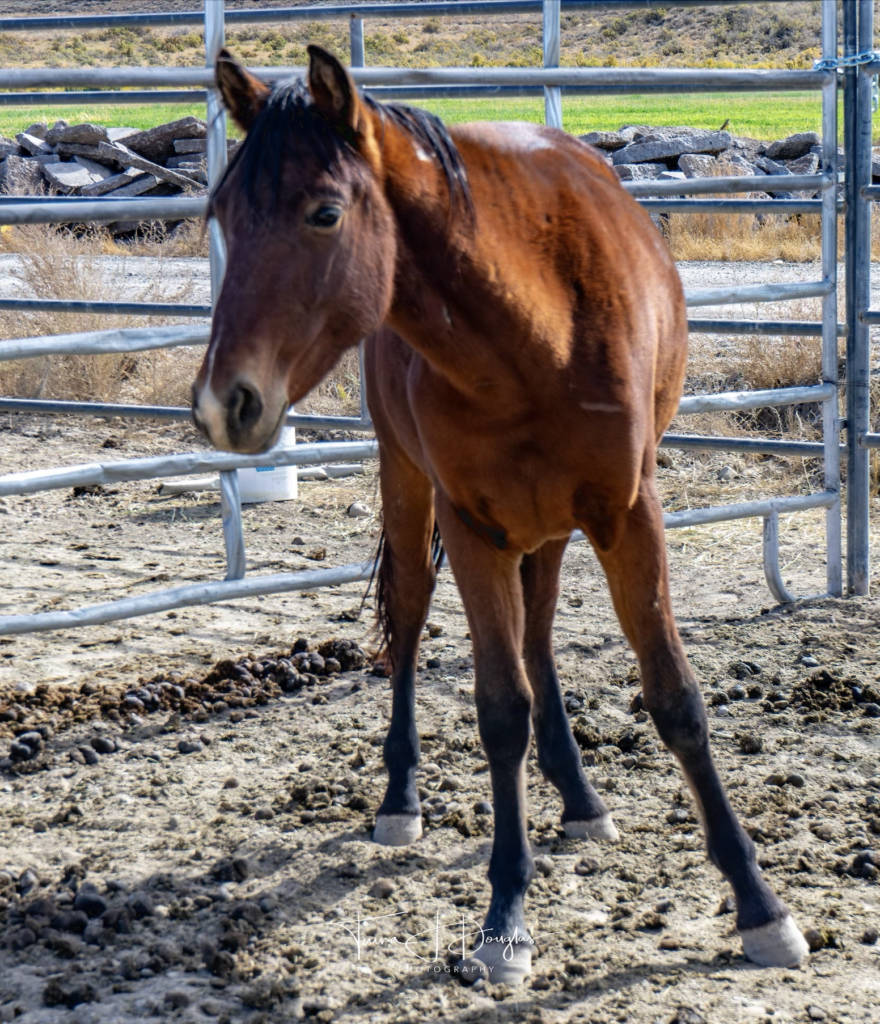
Population Control: The primary reason the BLM conducts roundups claims to be to control wild horse populations, but really is about psycopathic control by the controllers who want to monitor every living thing on this earth. They are playing God – megalomaniacs who want to know where the hair is on every head – which is the job of the Creator not of the surveillance state.
The BLM claims that wild horse populations can grow rapidly in the absence of natural predators. Without population control, the BLM says, the horses can out-compete other wildlife and livestock for limited resources, including water and forage, potentially leading to land degradation. According to the BLM, roundups are meant to prevent overpopulation that could harm the environment and the horses themselves, as well as other wildlife species. Blah Blah Blah. That is since they got rid of Wolves which were the main predator that managed horse populations. This is all for ranchers and the beef industry, which now the WEF wants to replace with bugs, but mark my words -there will be no end to why the wild things need to be eliminated or controlled on Earth because “humans” simply cannot work with Nature – they seem to have to dominate Nature.
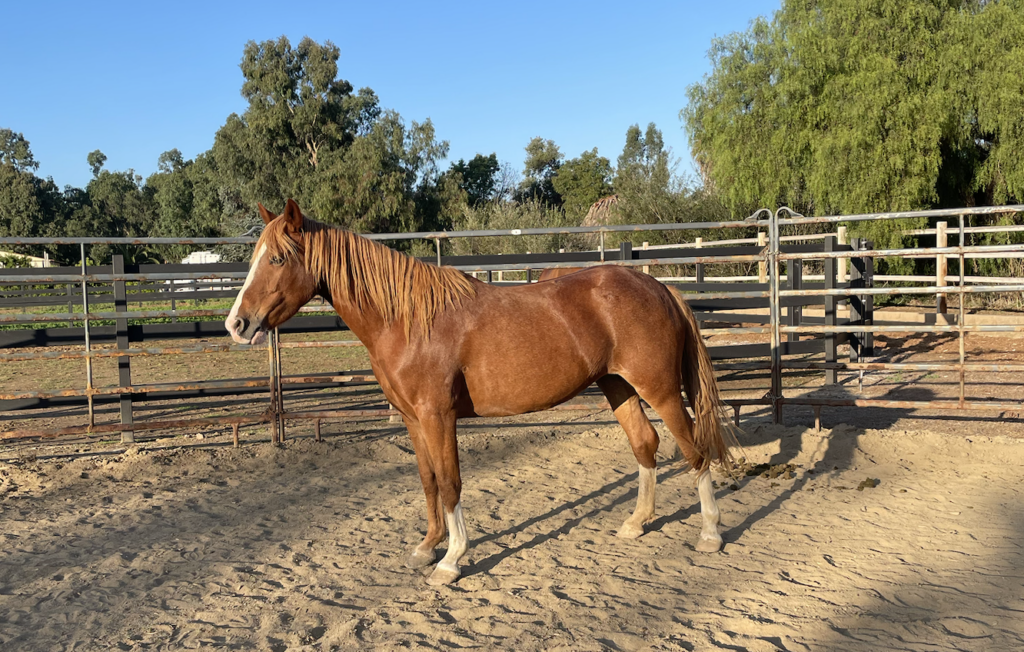
The BLM uses helicopters to herd the wild horses into traps. The roundups are often conducted in remote, rugged areas so regular people don’t know what is going on, though this method has drawn significant criticism from animal rights groups. The use of helicopters is seen by many as stressful and dangerous for the horses, particularly for foals, pregnant mares, and older horses. The horses become so traumatized that they develop physical and mental disorders.
Critics argue that the roundups are inhumane, causing stress, injury, and even death to the horses. The fast-paced nature of the helicopter-driven chases can be physically harmful, and the process of corralling and transporting the horses is also seen as traumatic.
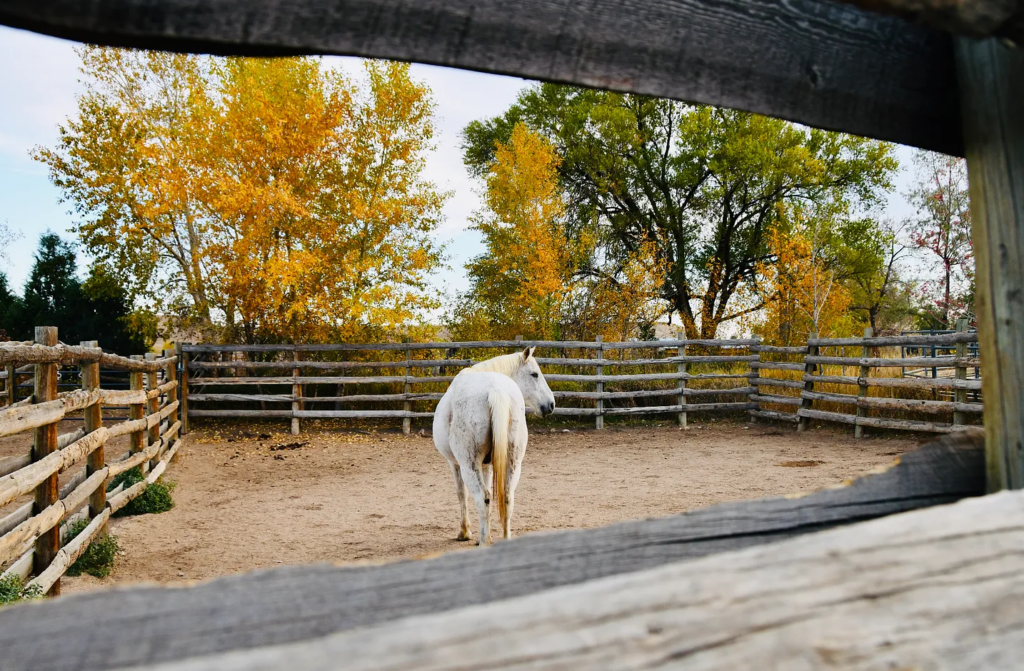
I dunno? Should we do this with our kids? I think it would be seen as traumatic if the BLM were rounding up populations of humans by helicopter, but because horses don’t speak English, we think it’s ok to do it to them.
Some animal rights advocates suggest that removing horses from the wild harms the social structure of herds and that alternatives like birth control (PZP, a contraceptive) should be used to control populations rather than mass roundups. But is that really ok either? Why must humans insist on controlling wild-horse populations on public lands? These lands are supposedly public – they are not private, so why can’t wild animals be left in peace on supposedly public lands?
The cost of gathering and caring for wild horses is another huge issue. After being captured, many horses are placed in long-term holding facilities, where they are often kept for the rest of their lives which are shortened by this cruel and medieval practice.
This has led to growing concerns over the financial cost to taxpayers and the lack of available adoptive homes for the animals.
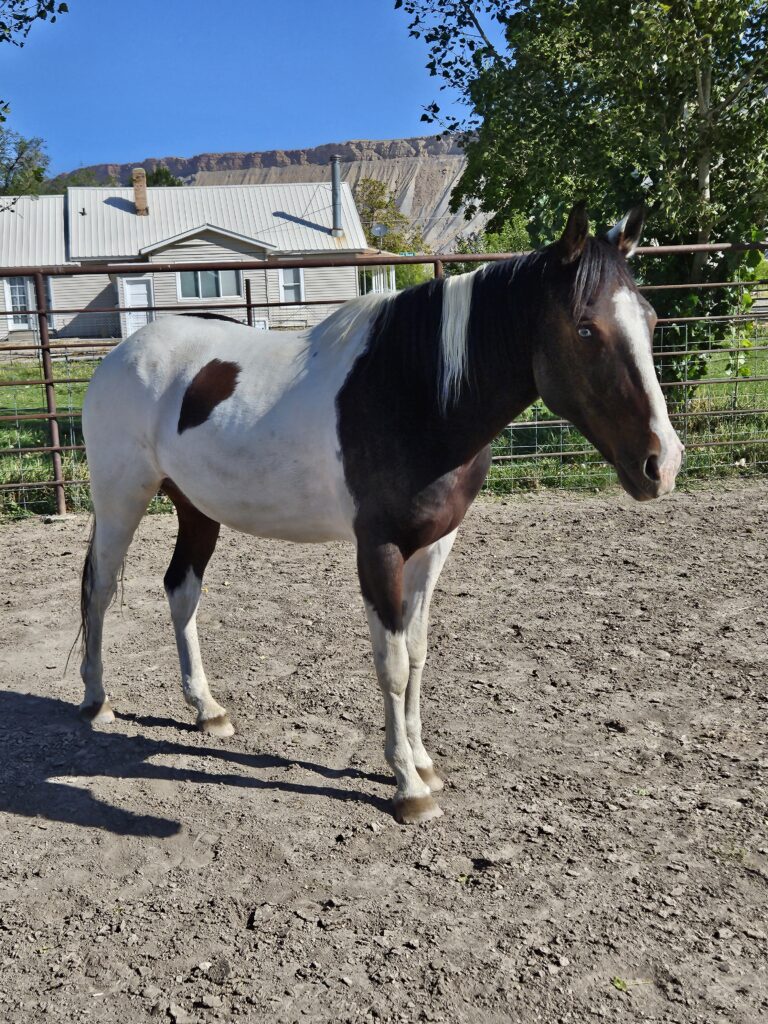
Proponents of the roundups argue that removing some of the horses is necessary to protect fragile ecosystems and ensure that other wildlife and plant species have enough resources. Oh yea? Then why the Chemtrails? If the environment is so “fragile” why the burning of tires and the landfills and the use of petroleum? – so obviously they are liars and they just enjoy bullying and torturing innocent creatures so that they can sell the public lands to the UN and use them for cattle grazing. Follow the money.
After being rounded up, horses that are not returned to the wild are made available for adoption. However, adoption rates have not kept pace with the number of horses gathered. This has led to the creation of long-term holding facilities where the horses live in pens or larger enclosures. Some mustangs are eventually sold to private buyers, and more often to slaughter houses.
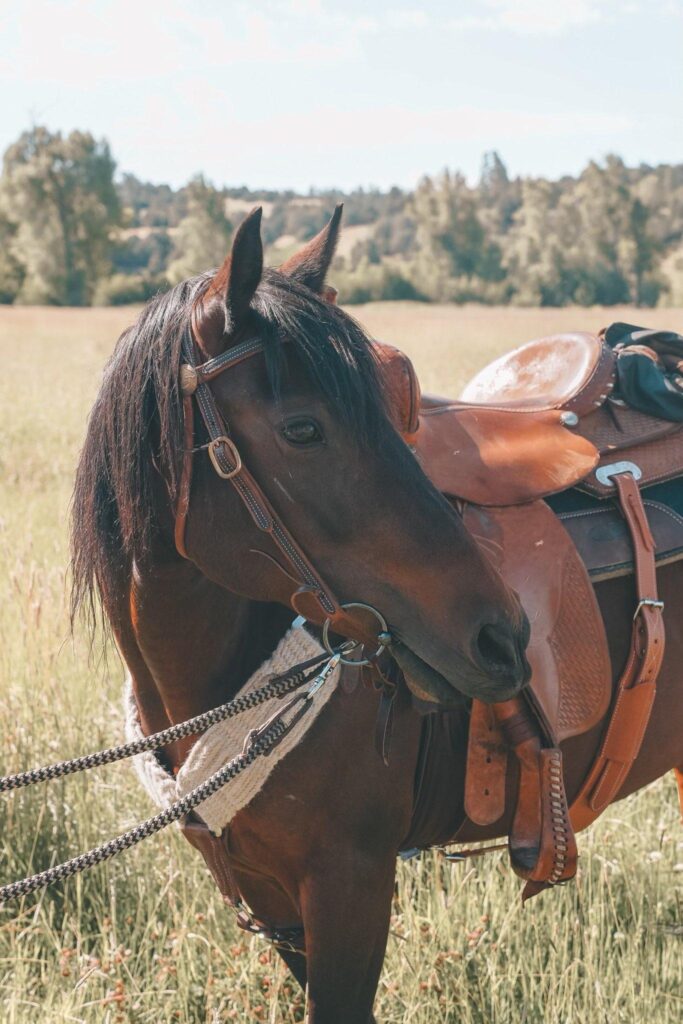
In response to the criticisms of the roundups, the BLM has explored and, in some cases, implemented other methods for managing wild horse populations:
Fertility Control: The use of immunocontraceptives, like PZP (Porcine Zona Pellucida), has gained attention as a potential tool to manage wild horse populations without removing horses from the wild. These methods can prevent mares from becoming pregnant, but their effectiveness and long-term feasibility in large-scale management programs are still debated.
Hmmm… does mean that the drugs have side-effects? What about self-ownership as the right of all sentient beings, under Natural Law?
Herd Management Areas (HMAs): The BLM designates Herd Management Areas to support wild horse populations on public lands. In theory, these areas are intended to provide a balance between horse populations and the resources of the land.
Legislative and Public Debate: Wild horse management is a highly polarized issue. There are those who advocate for the preservation of wild horses and their free-roaming lifestyle, arguing that the roundups are a violation of the original intent of the 1971 Wild Free-Roaming Horses and Burros Act. On the other side, ranchers, some conservationists, and the BLM maintain that the roundups are necessary for maintaining the ecological balance of the West’s public lands.
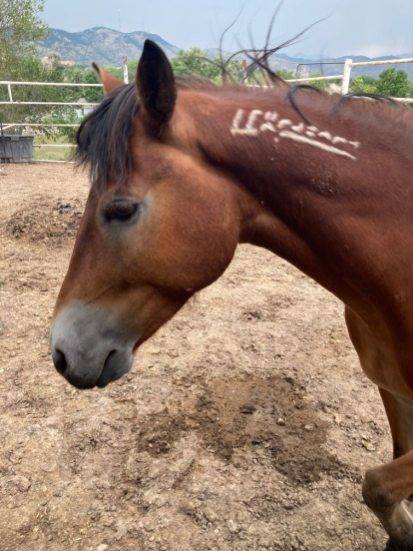
Torturing the Horses:
Freeze branding is a method used to mark wild mustangs (and other livestock) for identification. Unlike traditional hot branding, which uses a heated metal brand to burn the skin and create a permanent scar, freeze branding is considered less painful and causes less tissue damage. It’s a process in which the hair follicles are destroyed by freezing the skin, causing the hair in that area to grow back white or light-colored, while the skin itself remains undamaged. Less painful? Should we do this to our children? Is this once again, something humans are doing because we think it’s ok to do to creatures that don’t speak our language? Would we do it to our own children? No!
Preparation of the Brand:
Freeze Branding Iron: A metal branding iron is prepared and cooled using liquid nitrogen or dry ice. The iron is typically shaped with a specific pattern, often numbers or letters, to identify the horse. The brand can be a set of digits or letters, and each ranch or organization has a unique brand to ensure proper identification.
Cooling: The branding iron is placed in the liquid nitrogen or a dry ice bath to cool to extremely low temperatures (around -300°F or -184°C). This extreme cold will freeze the skin upon contact, making the branding process effective.
Preparation of the Horse:
Capturing the Mustang: For wild mustangs, the horse is usually captured in a roundup. Once captured, the horse is brought into a holding area, where it will be restrained for the freeze branding process. Restraining is important because it helps prevent the horse from moving and sustaining injury during the procedure.
Physical Handling: The horse is typically sedated or lightly tranquilized for safety and to reduce stress during the process, although some horses may be freeze branded while fully awake, depending on the protocol.

Freeze Branding Process:
Positioning the Branding Iron: The branding iron is placed on the skin in a specific location, typically on the left side of the neck or shoulder. This is because this area of the body is usually where horses are most commonly branded.
Freezing the Skin: The iron is pressed against the skin for about 30 seconds to 1 minute. The cold from the iron destroys the hair follicles in that area, preventing the regrowth of pigment, resulting in a white or light-colored brand mark. This is in contrast to the natural color of the coat, which allows the brand to be visible from a distance.

Hair Growth: After the freeze branding process, the fur around the branding area will grow back white, marking the horse permanently. The brand itself does not involve scarring or hair loss like a traditional hot brand, which can create a painful, permanent mark that is more damaging to the skin.
Post-Branding Care:
Healing: The area of the freeze brand may experience mild swelling or irritation immediately after the procedure, but because the skin is not burned or destroyed, the healing process is generally less traumatic than with hot branding. The hair will begin to grow back white after a few weeks, and the brand will be visible for the horse’s lifetime.
Monitoring: The horse is then monitored for any signs of infection or complications, although these are rare.
- Claimed Benefits of Freeze Branding
Less Pain and Injury: Freeze branding is considered less painful than hot branding because it does not burn the skin or create deep scarring. The process only affects the hair follicles and does not damage the skin’s deeper tissue.
No Scarring: Since it does not burn the skin, freeze branding does not leave the same deep scars that hot branding can cause. This makes it more humane from an animal welfare perspective.
Permanent Identification: The brand is permanent and can be used to track and identify horses throughout their lives, even if they are released back into the wild.
Less Stressful: Many animal welfare advocates argue that freeze branding is a less stressful form of identification for wild horses compared to traditional hot branding.
Why Is Freeze Branding Used for Wild Mustangs
Freeze branding is commonly used for wild mustangs for several reasons:
Identification: Wild horses often roam freely across large expanses of public land, and freeze branding provides a clear, permanent form of identification for management purposes. This is especially important for tracking individual horses, managing populations, and distinguishing between different herds or horses that might be adopted. This sounds good, but is it actually true?

Wild Horse Management: For mustangs, the freeze brand allows for identification when horses are rounded up in BLM roundups, or during adoption programs. It helps the Bureau of Land Management (BLM) and other agencies keep track of horses that have been removed from the wild, ensuring they are properly handled, adopted, or placed in holding facilities.
Tracking and Monitoring: The BLM and other organizations may also use freeze branding to track the horses’ movement or monitor their health and population growth over time.
Alternative to Hot Branding: Since wild mustangs are often captured and handled with minimal intervention (especially in large-scale roundups), freeze branding is seen as a more humane alternative to hot branding. What a bunch of bs – really? Even catching and releasing a fish is cruel torture to the animal – how is this really “humane”?
Criticism of Freeze Branding
While freeze branding is considered less painful than hot branding, it still remains controversial in some circles. Critics of freeze branding argue that:
Stress: The process of restraining and branding wild horses, even with freeze branding, can be stressful, especially for horses that are not accustomed to human handling.
Humaneness: Some animal rights groups believe that any form of branding is cruel, and they argue that less invasive identification methods, such as microchipping or the use of non-permanent tags, should be used instead.
Use in Roundups: Because freeze branding is often used in conjunction with roundups (which are themselves controversial), some view it as part of a larger system of practices that harm wild horses and disrupt their natural way of life.
The horses are captured in pens that squeeze them and tip them so that the brand can be administered – how is this not traumatic?
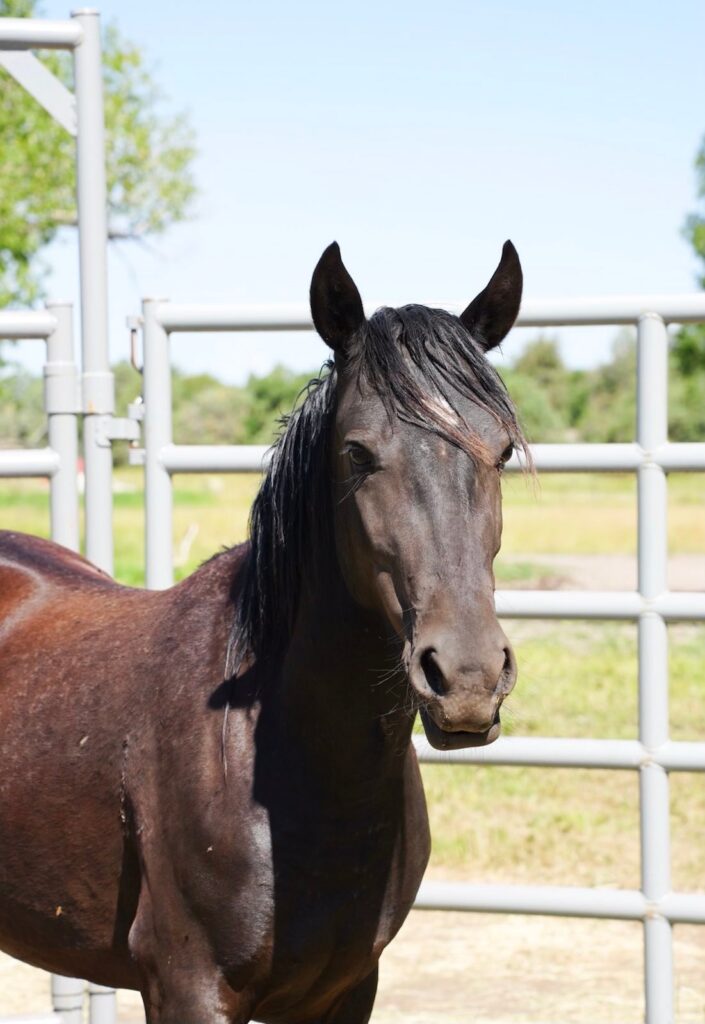
Freeze branding is claimed to be an identification process used to mark wild mustangs for monitoring and management purposes. It is supposedly a less painful alternative to hot branding and does not cause scarring or permanent tissue damage. While it is widely seen as a more humane option, it still involves handling and restraint that can be stressful for the horses, and its use is part of the broader, highly debated issue of wild horse management.
The issue of wild mustangs starving to death in pens is a serious concern related to the Bureau of Land Management’s (BLM) management of wild horse populations. While the BLM is tasked with protecting wild horses and burros, the agency has come under criticism for the conditions in which many of these animals are kept, especially in long-term holding pens after being rounded up from public lands. The tragic reality is that a number of mustangs have died in these facilities due to malnutrition, poor care, or inadequate resources.
The BLM Wild Horse and Burro Program claims that it is designed to manage the population of wild horses on public lands in the western United States. These horses, originally descendants of Spanish horses brought by settlers in the 16th century, are protected by theWild Free-Roaming Horses and Burros Act of 1971. However, the BLM’s efforts to manage supposedly overpopulated herds—often by removing horses from the wild in “roundups”—have led to the creation of holding pens where many of the horses are sent after being captured.
When wild horses are rounded up, they are often placed in temporary holding facilities and, in some cases, long-term holding pens. These pens, particularly those used for long-term storage of horses that are not adopted or sold, have become points of contention due to reports of poor living conditions and inadequate care, including issues related to food, water, and space.
The Issue of Starvation & Malnutrition
The problem of wild mustangs starving or dying in pens is linked to several factors:
- Inadequate Resources:
Overcrowding: Holding pens designed for wild horses are sometimes overcrowded, making it difficult for each horse to access enough food and water. When too many horses are placed in a pen with insufficient space, some may not be able to reach the feed, which can lead to malnutrition or dehydration.
Poor Quality Feed: The quality of feed in holding pens has been a consistent issue. While the BLM has protocols for providing hay and other feed, there have been reports that the feed is sometimes low in quality or unsuitable for the nutritional needs of wild horses, particularly when they are not used to the high-calorie, dense feed that may be provided in captivity. Some horses have trouble adjusting to this type of feed, leading to health problems.
Environmental Conditions: Holding pens can also be exposed to extreme weather conditions, including harsh winters or excessive heat, which can exacerbate health problems. Lack of adequate shelter, poor water quality, and unsanitary conditions are frequently cited as problems in these facilities.
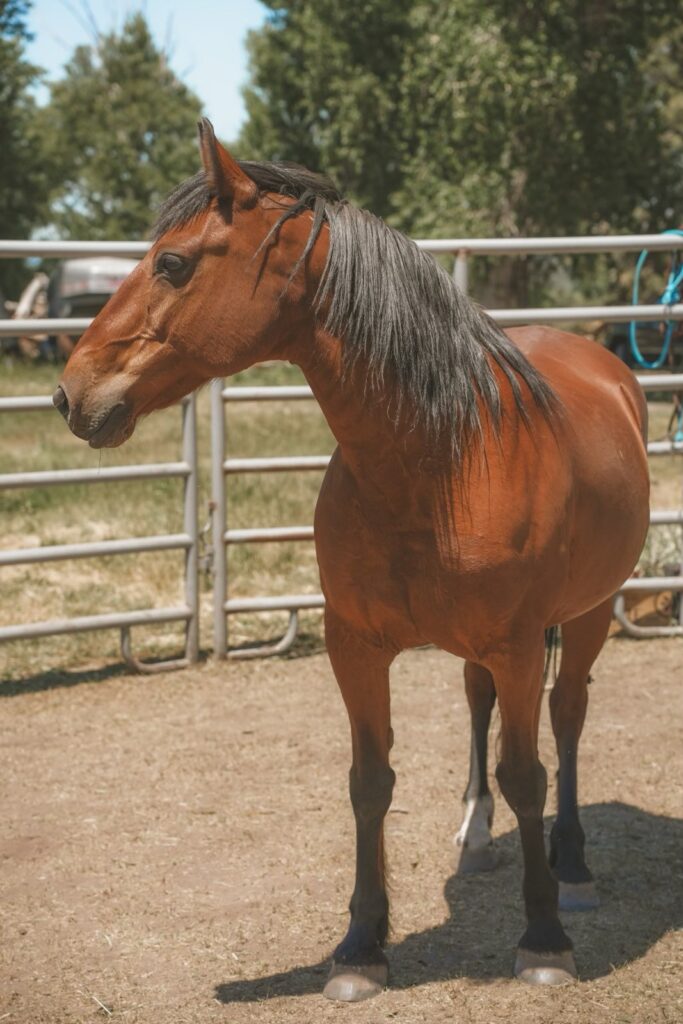
- Increased Mortality Rates:
Death by Starvation: In some cases, wild horses are found dead in pens from starvation or related causes. While the BLM has protocols for feeding and care, investigations and reports from animal welfare groups have suggested that a lack of sufficient resources or inadequate supervision of the horses can lead to unnecessary deaths.
Stress and Inadequate Care: Horses that are captured during roundups are often subjected to extreme stress and trauma. The confinement in pens, coupled with poor feeding or the stress of being removed from their natural environment, can weaken horses’ immune systems and contribute to illness or death. Young foals, elderly horses, and pregnant mares are particularly vulnerable.
Lack of Veterinary Care: In some cases, the horses may not receive the medical attention they need. Injuries from the roundup process, as well as natural illnesses, can go untreated in overcrowded pens, leading to complications and death.
- 3. Controversial Long-Term Holding:
Lack of Adoption: A significant number of the horses removed from the wild are not adopted or sold. They are instead placed in long-term holding facilities, where the conditions can be poor. The BLM has been criticized for its failure to find sufficient homes for these animals. As of recent years, there have been far more horses in long-term holding than can be adopted, leading to overcrowding and strain on resources.
Financial Costs: The financial cost of holding these horses is another factor contributing to the problem. The BLM spends significant taxpayer money to care for horses in holding pens. With thousands of wild mustangs being removed from public lands and very few being adopted, the costs continue to rise. The growing number of horses in holding pens and the strain on available resources have made it harder to ensure adequate care for each animal.
- 4. Public Outcry and Advocacy:
Animal welfare organizations have raised concerns about the conditions in BLM holding pens for years. Groups like the American Wild Horse Campaign (AWHC), the Humane Society of the United States, and Return to Freedom have documented instances of malnutrition, overcrowding, and death. They argue that long-term confinement is an inherently flawed solution to wild horse overpopulation and that the BLM’s practices are inhumane.
Push for Alternatives: Advocates are calling for non-lethal alternatives to roundups and holding pens, such as the use of fertility control (e.g., PZP) to manage populations and the creation of larger, more natural herd management areas where wild horses can roam freely without the threat of removal. These groups also support better management and care for horses already in holding pens, including greater investment in adoption programs and efforts to find more homes. Or how about just leaving the wild horses and burros alone?
- Allegations of Mistreatment and Torture
There have been several high-profile incidents and allegations of wild horses being abused or mistreated in the care of the BLM, leading to accusations of torture and inhumane treatment. Some of the most prominent concerns and reports have included:
- Helicopter Roundups:
Excessive Stress and Injury: One of the most controversial aspects of the BLM’s wild horse management is the use of helicopters to round up wild horses. This method, used to herd horses into traps, has been widely criticized for causing severe stress, injury, and even death to the horses. There are numerous reports of horses being chased relentlessly, sometimes for miles, at high speeds by helicopters. In some cases, injuries and deaths have occurred as horses collide with obstacles, fall, or suffer from exhaustion.
Trauma to Foals and Pregnant Mares: Pregnant mares and foals are particularly vulnerable during these roundups. Foals have been known to die from the stress or from being separated from their mothers. Pregnant mares are sometimes injured or even lose their foals due to the physical strain of being chased by helicopters.
Extreme Fatigue and Dehydration: The horses, who may be chased for miles without food or water, can become severely dehydrated and exhausted. For many horses, especially older animals, this can lead to long-term health issues or even death.
Inhumane Handling and Holding Facilities:
Overcrowding and Poor Conditions: After wild horses are captured in roundups, they are often transported to holding pens. Some of these facilities have been criticized for overcrowding, poor hygiene, and inadequate care. Horses may not have enough space to move around, leading to stress, injury, and illness. In many cases, the pens have been reported to be overcrowded, and horses may not be able to access food and water properly.
Tethering and Confinement: In some cases, horses in these holding pens are tied or confined in such a way that they cannot move freely, increasing stress and the risk of injury. The confinement can be so severe that it leads to behavioral issues such as aggression, fear, or depression, which are unnatural for wild horses that are used to roaming freely.
Accusations of Direct Abuse or Mistreatment:
Physical Abuse: There have been incidents where BLM employees, contractors, or subcontractors have been accused of direct physical abuse of wild horses. This includes allegations of kicking, beating, or otherwise abusing horses during roundups or while handling them at holding facilities. In some cases, reports have emerged of horses being roughly handled during transport or being forced into pens in ways that resulted in injuries or distress.
Use of Painful Techniques: Other allegations have included the use of painful or inappropriate techniques, such as forcing horses to endure long periods of confinement without water, or using harsh equipment to move or restrain the animals.
- Deaths in Holding Pens:
Starvation and Neglect: Horses have died in holding pens from starvation, dehydration, and neglect. In some cases, horses have been found dead after being trapped in overcrowded pens with inadequate access to food or water. Reports of dead or dying horses in holding facilities have sparked outrage, as these deaths could often be avoided with proper care and management.
Veterinary Neglect: Some horses have reportedly suffered from injuries or illness while in BLM custody, with insufficient veterinary care provided. In some extreme cases, horses have died due to untreated injuries sustained during roundups or from failure to treat illness.
- Investigations and Legal Action
The mistreatment of wild horses, including allegations of torture, has prompted several investigations and legal actions over the years. Some notable incidents include:
Investigations by Animal Rights Groups:
Groups like the American Wild Horse Campaign (AWHC) and the Humane Society of the United States have documented incidents of alleged abuse and mistreatment. They often work with whistleblowers, former employees, and independent investigators to expose these issues, submitting reports to government agencies and the public.
Video Evidence: In some cases, animal rights organizations have been able to capture video footage showing instances of abuse or poor conditions at BLM holding facilities. These videos have been used to raise awareness and call for reforms.
- 2. Accountability and Consequences:
In the past, when incidents of cruelty or neglect were brought to light, there have been investigations into BLM employees or contractors involved in roundups and handling procedures. While some individuals have been disciplined or fired, critics argue that these actions are not enough to address the systemic issues at hand. In many cases, the scale of abuse or neglect is so large that individual accountability is difficult to enforce.
- It is unlikely that this genocide will ever end unless there is enough and outcry from the People!
- Public Pressure and Awareness Campaigns
Public opinion plays a significant role in influencing policy. If a critical mass of people demand changes to how wild horses are managed, it can create enough political pressure to compel lawmakers and government agencies to act. Several approaches to raise awareness and mobilize public support include:
Advocacy and Public Campaigns
Grassroots Activism: Organizations such as the AWHC and the Wild Horse Freedom Federation engage in public awareness campaigns, lobbying, and grassroots activism to rally public support for ending roundups and protecting wild horses. Their efforts include public demonstrations, petitions, and social media campaigns.
Media Coverage: Documentaries, news stories, and viral social media campaigns can help highlight the cruelty and inefficiency of roundups, making it more difficult for the BLM to continue without scrutiny.
- b) Lobbying Congress
Direct lobbying efforts aimed at congressional representatives can lead to policy change. If a critical mass of lawmakers supports ending the roundups or transitioning to non-lethal alternatives, it could lead to funding reallocations and new legislative protections for wild horses.
Conclusion: Can Roundups Be Stopped?
Ending the BLM’s wild horse roundups entirely would likely require a combination of:
Political and public pressure on lawmakers and the BLM to adopt alternative management practices, such as fertility control and expanded HMAs.
Legal action to challenge harmful roundup practices and enforce stricter humane treatment standards.
Reform of existing policies and programs to shift the focus away from removal and toward maintaining healthy, viable populations of wild horses in their natural habitat.
While it’s unlikely that roundups will be completely eliminated in the immediate future, there is hope that with increased public awareness, advocacy, and legislative action, the practice can be drastically reduced or reformed to make it more humane, sustainable, and focused on non-lethal population control methods.
Resources to learn more about this problem can be found in Facebook Groups which show the footage of video of the roundups and at Non-Profit Association Websites:
Great Escape Mustang Rescue
Website: https://greatescapemustangs.org
The Choice Tribe
Website: https://www.choicetribe.com
The Mustang Heritage Foundation.
Website: mustangheritagefoundation.org
The Wild Horse and Burro Coalition
Website: wildhorseandburrocoalition.org
Colorado Wild Horse & Burro Coalition
Website: coloradowildhorse.org
Mustangs of the West
Website: mustangsofthewest.org
Return to Freedom
Website: returntofreedom.org
Cloud Foundationcc
Website: thecloudfoundation.org
Rocky Mountain Wild Horse and Burro Association
Website: rmwildhorse.org
The American Wild Horse Campaign
Website: wildhorsecampaign.org
Return to Freedom
Website: returntofreedom.org
Wild Horse Education
Website: wildhorseeducation.org
American Mustang Foundation
Website: americanmustang.org
The Wild Horse Preservation Campaign
Website: wildhorsepreservation.org
Wild Horses of America
Website: wildhorsesofamerica.org
The International Society for the Protection of Mustangs and Burros (ISPMB)
Website: ispmb.org
New Mexico Wild Horses & Burros
Website: nmwildhorses.org
Equine Welfare Alliance
Website: equinewelfarealliance.org
Salt River Wild Horse Management Group
Website: www.srwhmg.org
Arizona Mustang
Website: www.arizonamustang.com
Equine Voices Rescue & Sanctuary
Website: www.equinevoices.org
Red Horse Rescue
Website: www.redhorserescue.org
Oregon Wild
Website: oregonwild.org
The Wild Horse Sanctuary
Website: thewildhorsesanctuary.org
Friends of the Mustangs
Website: friendsofthemustangs.org
Wild Horse Outreach
Website: wildhorseoutreach.org
